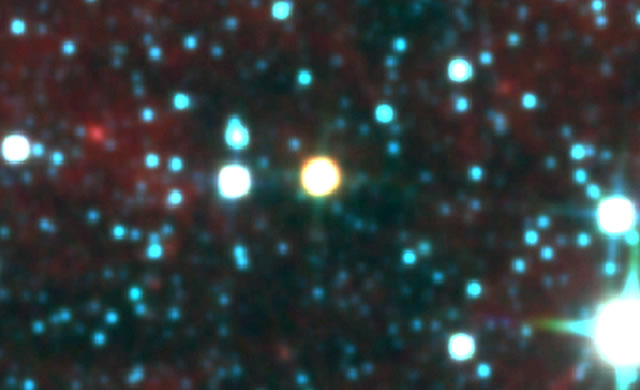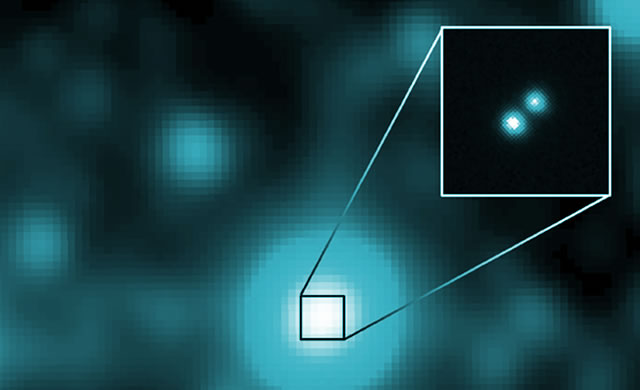
Due nane brune a un passo da noi – Scoperto da un gruppo di astronomi statunitensi il terzo sistema stellare più vicino al Sole. Si tratta di WISE 1049-5319, un sistema binario di due nane brune, stelle fredde e dalla luce debole, distanti appena 6,5 anni luce dal Sole. È il sistema più vicino a noi scoperto dal 1916, quando venne scoperta la Stella di Barnard.
Il Sole ha dei nuovi vicini di casa. Ha un nome complicato da ricordare il nuovo sistema stellare scoperto dal team di ricercatori guidati da Kevin Luhman: si chiama WISE J104915.57-531906 ed è il terzo sistema più vicino al Sole e il più vicino a essere scoperto dal 1916. Si tratta di un sistema binario composto da due nane brune, quindi stelle relativamente fredde e debolmente luminose, molto più simili a pianeti tipo Giove che a stelle come il Sole. Le due stelle sono visibili nella costellazione della Vela e si trovano a 6,5 anni luce dal Sole: in un futuro molto distante, azzardano i ricercatori, potrebbero addirittura essere una delle prime destinazioni per missioni spaziali con equipaggio umano al di fuori del Sistema solare. La scoperta è stata realizzata grazie al satellite Wide-field Infrared Survey Explorer (WISE) della NASA. Il sistema binario è di poco più lontano rispetto alla Stella di Barnard, scoperta proprio nel 1916 a 6 anni luce dal Sole. Il sistema stellare più vicino a noi, invece, è Alpha Centauri, a soli 4,4 anni luce.
WISE J104915.57-531906 – WISE 1049-5319
Fonte/Leggi tutto → Media.INAF.it

NASA’s Wide-field Infrared Survey Explorer (WISE) has discovered a pair of stars that has taken over the title for the third-closest star system to the sun. The duo is the closest star system discovered since 1916.Both stars in the new binary system are “brown dwarfs,” which are stars that are too small in mass to ever become hot enough to ignite hydrogen fusion.
As a result, they are very cool and dim, resembling a giant planet like Jupiter more than a bright star like the sun. “The distance to this brown dwarf pair is 6.5 light-years, so close that Earth’s television transmissions from 2006 are now arriving there,” said Kevin Luhman, an associate professor of astronomy and astrophysics at Penn State University, University Park, Pa., and a researcher in Penn State’s Center for Exoplanets and Habitable Worlds. “It will be an excellent hunting ground for planets because the system is very close to Earth, which makes it a lot easier to see any planets orbiting either of the brown dwarfs.” The results will be published in the Astrophysical Journal Letters. The star system is named “WISE J104915.57-531906” because it was discovered in an infrared map of the entire sky obtained by WISE. It is only slightly farther away than the second-closest star, Barnard’s star, which was discovered 6 light-years from the sun in 1916. The closest star system consists of: Alpha Centauri, found to be a neighbor of the sun in 1839 at 4.4 light-years away, and the fainter Proxima Centauri, discovered in 1917 at 4.2 light-years.
Source/Continue reading → NASA.gov





















